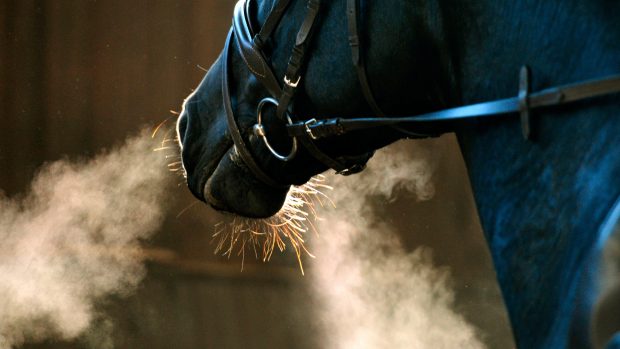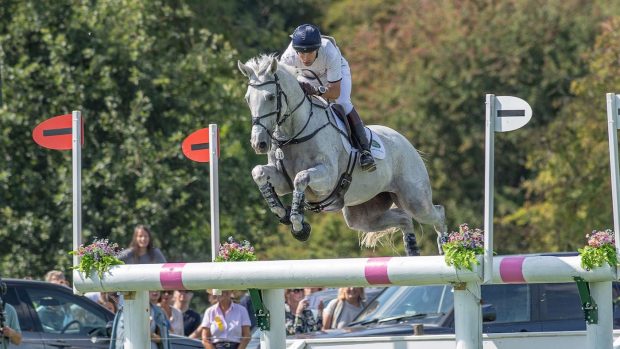Q: My six-year-old part-bred Thoroughbred has been diagnosed with a mild case of COPD, which she developed before I got her. One of the symptoms is doubled expirations.
Could you explain what causes her to do this and if it causes any discomfort to her during exercise?
Jo Holmes MRCVS replies: Your mare has developed Chronic Obstructive Pulmonary Disease (COPD) which means that she has become allergic to some of the dusts and fungal spores found in hay and bedding.
The condition is also known as ‘heaves’ because one of the first signs of the problem is an increased respiratory effort and shortness of breath after exercise. The horse’s chest heaves in and out to pull in oxygen.
Healthy horses and humans breathe similarly; inspiration is active as the diaphragm (a large muscle separating thechest from the abdomen) contracts to allow air into the lungs.
Expiration is normally passive, requiring no effort, since the elastic recoil of stretched muscle propels air out of the lungs.
Horses with COPD are generally trying so hard tobreathe that expiration becomes active and other chest muscles have to be recruited to try and help with the expulsion of air from the lungs.
Sometimes a double expiratory effort is seen as the horse tries to remove the used-up air from itslungs before inhaling fresh lungfuls of oxygen.
COPD is similar to the conditions of asthma and farmer’s lung in humans – it is caused by exposure to dust and mould (allergens) in forage but some horses are more likely to develop it.
The internal lining of the lung becomes inflamed when exposed to allergens and swells up in a typical inflammatory response. This swelling narrows the airways and disrupts the passage of air containing vital oxygen.
Other clinical signs include achronic, soft cough and sometimes a ‘heave line’ where intercostal muscles around the rib cage have overdeveloped to assist expiration.
In acute cases, an increased respiratory rate may be seen even at rest in the stable. Normal respiratoryrate for a resting horse is eight to 12 breaths per minute but a horse suffering an acute attack of COPD may breathe more than 20 breaths per minute.
Your horse may show some intolerance to exercise since she is only likely to go at a speed at which she can cope. However, as long as you don’t try and push her beyond this, she shouldn’t experience too great a discomfort.
The best way to help her is to remove the causes of her allergy and change her environment. If you can keep her in a field at all times she will not be exposed to bedding allergens; soaked hay can supplement her grass diet if necessary. If she’s stabled, paper bedding and dust-free, vacuum-packed shavings are best.
If she still has problems when exercised, or you cannot change her stable management, there are various drugs that can help – speak to your vet for advice. I have had success with commercially available herbal feed supplements designed to boost respiratory function which are as effective as drugs.
The only other treatment involves allergy testing to find out exactly which fungal spores she is allergic to. Once identified, samples of the allergen are injected at regular intervals to desensitise the body and encourage it to develop an immunity. This procedure can take several months to work. One treatment may work better than another, on individual horses, so you may need to experiment.
It is likely that your mare will always be allergic to certain dusts andspores and you will have to ensure she is not exposed to them.
Read more expert advice about COPD:



